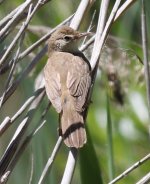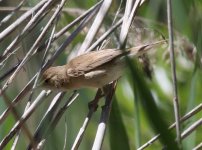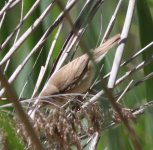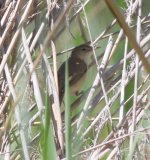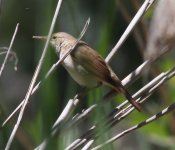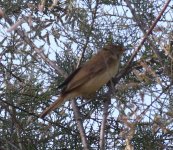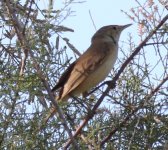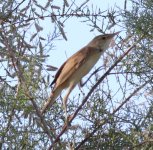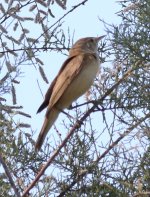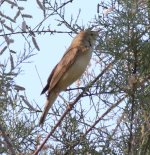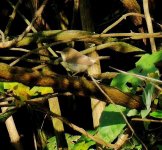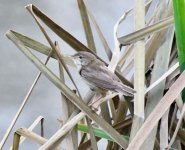opisska
rabid twitcher

So I set off to the reedbeds of Andalusia to try to get some picture of the Reed Warblers, in hope some of those may be good enough to be discussed within the African/Eurasian questions ...
... and the best ones I got were those and they left me utterly confused. There were two birds, who looked like they were interacting. I am not exactly sure which one is which, but some shots seem to show a much less rusty bird than others and where rump is visible, the lack of rufous is surprising to me. A lot of Reed Warbler song has been heard in the area (Humedal de Padul), but also other warblers, including a likely Western Olivaceous; those two obviously did not sing (otherwise I wouldn't be having stupid questions like this).
So before are start counting the emarginations, are those even Reed warblers or what?
... and the best ones I got were those and they left me utterly confused. There were two birds, who looked like they were interacting. I am not exactly sure which one is which, but some shots seem to show a much less rusty bird than others and where rump is visible, the lack of rufous is surprising to me. A lot of Reed Warbler song has been heard in the area (Humedal de Padul), but also other warblers, including a likely Western Olivaceous; those two obviously did not sing (otherwise I wouldn't be having stupid questions like this).
So before are start counting the emarginations, are those even Reed warblers or what?




